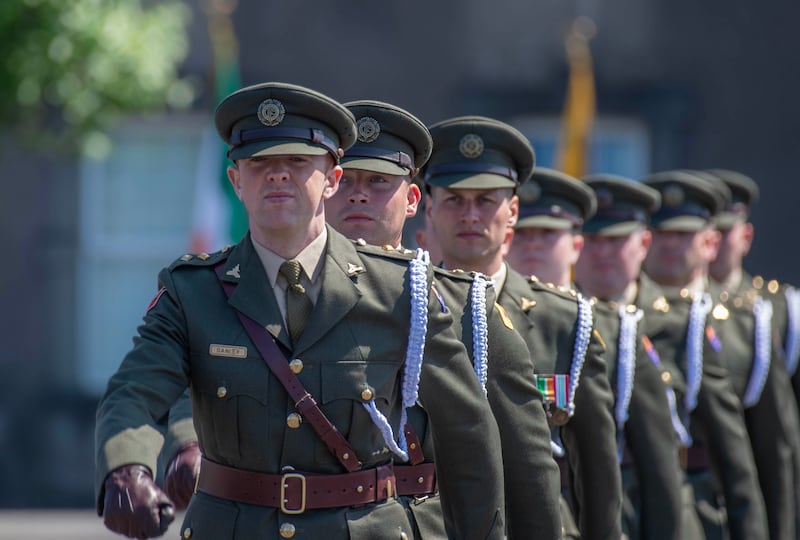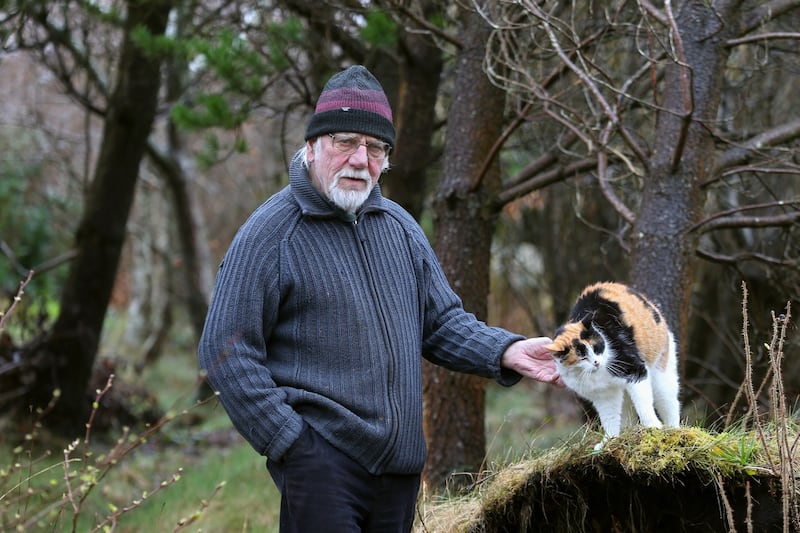The war in Ukraine has highlighted the continued importance of artillery fire support, particularly when dealing with drone attacks, Defence Forces Chief of Staff, Lieut Gen Sean Clancy told an event at Collins Barracks in Cork to mark the centenary of the establishment of the army’s Artillery Corps.
Lieut Gen Clancy said that democracy and sovereignty within Europe is being challenged by the ongoing war in Ukraine while issues such as energy supply, climate change, critical infrastructure, cyber attacks and drone attacks require the Defence Forces to be prepared for various contingencies.
The recent Commission on the Defence Forces identified indirect fire support from artillery and air defence capability, again from artillery, as being to the forefront of future Defence Forces structures, he told the centenary ceremonial parade in the barracks square.
“Indeed, the conflict in Ukraine has highlighted the continued importance of artillery fire support and the need to protect forces from aerial threats to include unmanned platforms,” said Lieut Gen Clancy, noting that artillery can continue to contribute effectively within a modern force.
Pat Leahy: Have our politicians forgotten what happens when you lose control of the public finances?
‘The phone would ring and it would be Mike Scott from the Waterboys or Bono from U2. Everyone wanted to talk to my father’
Chris Packham: ‘I was a very angry young man, confused because of my undiagnosed autism. It had an enormous impact on my life’
Bashed tables, dad dancing and pizza: how the deal for a new government was done

The Defence Forces have plans to acquire new ground based air defence radars and associated missile effector systems as recommended in the Defence Forces Commission report, while the upgrading of its 105mm light guns will future-proof the weapons out until 2035, he said.
Reviewing 62 members of the 1st Artillery Brigade from Cork and the 2nd Artillery Brigade from Athlone, Lieut Gen Clancy also acknowledged the important ceremonial role of the Artillery Corps in delivering gun salutes at events at Áras an Uachtaran, Dún Laoghaire and Spike Island over the years.
Earlier, Brig Gen Gerard Buckley of the Artillery Corps recalled how the corps was established on March 23rd 1923, in Clancy Barracks in Dublin under the leadership of Col PA Mulcahy “who had at that time under his command 11 officers, 52 enlisted personnel and 10 horses”.
The Artillery Corps had its first shoot on September 1st, 1925, in the Glen of Imaal and the first anti-aircraft battery was established in 1930 in the Curragh. Coastal defence artillery units were established in the late 1930s in Cork and Donegal following the handover of the Treaty ports, he said.
The Artillery Corps Heavy Mortar Troop travelled on UN Peacekeeping duties in 1960 to the Congo where it distinguished itself in action. The members of the Artillery Corps have also played critical roles in peacekeeping missions in Libya as well as Liberia, Chad and Eritrea, he said.
“As I finish, I wish to remember those gunners who are no longer with us, those whose legacy we have inherited in particular those who lost their lives on peacekeeping missions and those who died in a training incident in the Glen of Imaal in September 1941 – Ar dheis Dé a raibh a n-anam dilis.”
Lieut Gen Clancy, GOC 1 Brigade Brigadier General Brian Cleary and retired Regimental Sgt Major, Paddy Driscoll then laid wreaths following by a minute’s silence which was ended with the firing of a 25 pounder gun before Piper Freddie Strutt played Oft In the Stilly Night.
The No 1 Army Band of No 1 Brigade under the baton of Capt Ben Jacob played the Last Post before the National Flag was raised and Reveille. The ceremony concluded with the playing of Amhrán na bhFiann before the Artillery Corps members left the barracks square.




